Introduction
Progressive Die technology is a precision metal stamping method used in manufacturing. It involves a series of dies that incrementally shape and cut metal sheets as they pass through the tool. This efficient process allows for high-volume production of complex parts with tight tolerances. Stamod Technologies excels in leveraging Progressive Die technology for enhanced precision and productivity in metal forming.
Efficient Die Maintenance is crucial for sustained manufacturing productivity. Troubleshooting plays a pivotal role in identifying and resolving issues within Progressive Dies. Timely detection of problems ensures minimal downtime, prevents costly breakdowns, and maintains product quality. Stamod Technologies excels in troubleshooting, offering proactive solutions to enhance Die Maintenance, optimize performance, and extend the lifespan of Progressive Dies for consistent and reliable production.
Common Progressive Die Problems
Major Issues in Progressive Die Operations
Progressive Die operations, while efficient, can encounter various challenges. These include:
- Die Wear and Tear
- Continuous use can lead to wear on die components, affecting precision.
- Material Variability
- Inconsistencies in material properties may result in variations in part quality.
- Tool Misalignment
- Progressive Dies rely on precise alignment; any deviation can lead to errors in production.
- Sticking or Jamming
- Parts may get stuck or jammed in the dies, causing disruptions and potential damage.
- Cracking or Fractures
- High stress points can lead to cracking or fractures in the die and produced parts.
- Slug Pulling
- Material can adhere to the punch, affecting the next stamping operation.
- Springing
- Elastic deformation of the material, impacting the accuracy of the formed part.
- Inadequate Lubrication
- Poor lubrication can lead to increased friction, impacting tool life and part quality.
Addressing these challenges through effective troubleshooting is essential for maintaining optimal Progressive Die operations and ensuring consistent, high-quality production.
The Impact of These Problems on Precision Engineering
The challenges in Progressive Die operations have a profound impact on Precision Engineering, influencing the quality, accuracy, and overall efficiency of manufacturing processes:
- Dimensional Inaccuracy
- Issues such as wear, misalignment, or tooling problems can lead to dimensional variations, compromising the precision of manufactured parts.
- Quality Assurance Concerns
- Material variability, cracking, or inadequate lubrication can result in defects, affecting the quality and reliability of the final products.
- Reduced Tool Life
- Problems like sticking, jamming, or inadequate lubrication accelerate wear and reduce the lifespan of the dies, impacting long-term precision.
- Increased Scrap Rates
- Inaccurate or defective parts contribute to higher scrap rates, negatively impacting production efficiency and cost-effectiveness.
- Compromised Tolerances
- Progressive Dies require tight tolerances, and any issues in operations can lead to deviations from specified tolerances, affecting part functionality.
- Production Delays
- Downtime resulting from troubleshooting and repairs can lead to delays in production schedules, affecting overall manufacturing timelines.
- Cost Implications
- Addressing problems related to Progressive Die operations incurs additional costs for repairs, maintenance, and potential rework, impacting the overall cost-effectiveness of production.
The Challenges Faced by Manufacturers
Manufacturers face several challenges in Progressive Die operations that can impact overall production efficiency, cost-effectiveness, and product quality:
- High Initial Costs
- Investing in Progressive Die technology requires significant upfront capital, which can be a challenge for smaller manufacturers.
- Skilled Labor Requirement
- Operating and maintaining Progressive Dies demands skilled personnel, and finding qualified professionals can be a challenge.
- Material Variability
- Inconsistent material properties can lead to variations in part quality, posing a challenge for maintaining uniformity in production.
- Tooling Wear and Tear
- Progressive Dies undergo continuous wear, necessitating regular maintenance and potential replacement, adding to operational costs.
- Downtime for Maintenance
- Routine maintenance and troubleshooting can result in production downtime, impacting overall output and profitability.
- Complex Troubleshooting
- Identifying and resolving issues within Progressive Dies can be complex, requiring expertise and time for effective troubleshooting.
- Quality Assurance
- Ensuring consistent part quality and meeting stringent quality standards can be challenging, particularly with variations in material properties.
Proven Techniques for Progressive Die Troubleshooting
Identify Key Troubleshooting Steps
- Diagnostic Methods for Die Issues
- Visual Inspection
- Conduct a thorough visual examination of the Progressive Die for signs of wear, cracks, or misalignment.
- Dimensional Analysis
- Use precision measuring tools to assess the dimensions of produced parts and identify any deviations from specifications.
- Material Analysis
- Analyze the material properties to ensure consistency and address any variations causing defects.
- Die Tryouts
- Systematically test the Progressive Die using controlled die tryouts to pinpoint specific issues during production simulations.
- Monitoring and Data Analysis
- Implement sensors and monitoring systems to collect data during production, aiding in the identification of recurring issues.
- Collaborative Team Approach
- Foster communication between operators, maintenance personnel, and engineers to gather insights from different perspectives.
- Root Cause Analysis
- Employ root cause analysis methodologies to trace issues back to their origins and address underlying problems.
- Precision Engineering Solutions
- Material Selection and Analysis
- Optimize material selection based on properties and conduct thorough material analysis to anticipate and mitigate potential challenges.
- CAD/CAM Technologies
- Utilize advanced Computer-Aided Design (CAD) and Computer-Aided Manufacturing (CAM) technologies for precise Die design and simulation.
- Tolerance Management
- Implement tight tolerance management strategies to ensure the final product meets specified dimensional requirements.
- Innovative Coating Technologies
- Explore advanced coating technologies to enhance the durability and performance of die components.
- Continuous Improvement Practices
- Foster a culture of continuous improvement, encouraging regular assessments and upgrades to incorporate the latest Precision Engineering advancements.
Stamod’s Experience in Resolving Complex Die Problems
With a rich legacy in precision engineering, Stamod Technologies has consistently demonstrated unparalleled expertise in resolving complex Progressive Die problems. Our seasoned professionals leverage extensive industry experience to diagnose intricate issues through meticulous analysis, employing cutting-edge diagnostic methods. Whether addressing wear and tear, material variability, or dimensional inaccuracies, Stamod’s proactive troubleshooting approach ensures swift and effective resolutions. Our commitment to innovation, coupled with a collaborative team approach, empowers us to navigate the complexities of Progressive Die operations. Stamod’s track record showcases a proven ability to optimize manufacturing processes, enhance efficiency, and deliver reliable solutions for even the most challenging die-related issues.
Conclusion
In conclusion, mastering Progressive Die troubleshooting is pivotal for sustained manufacturing excellence. Stamod Technologies, with its proven techniques and precision engineering solutions, stands as a beacon in resolving complex die problems. Our unwavering commitment to innovation and expertise ensures efficient troubleshooting, minimizing downtime, and optimizing production. As a leader in the industry, Stamod continues to play a transformative role, empowering manufacturers to overcome challenges, maintain precision, and elevate the performance of Progressive Die operations for enhanced overall productivity and success.

Engineering
Manufacturing
Intelligent Automation
Staff Augmentation
Engineering
Manufacturing
Intelligent Automation
Staff Augmentation

